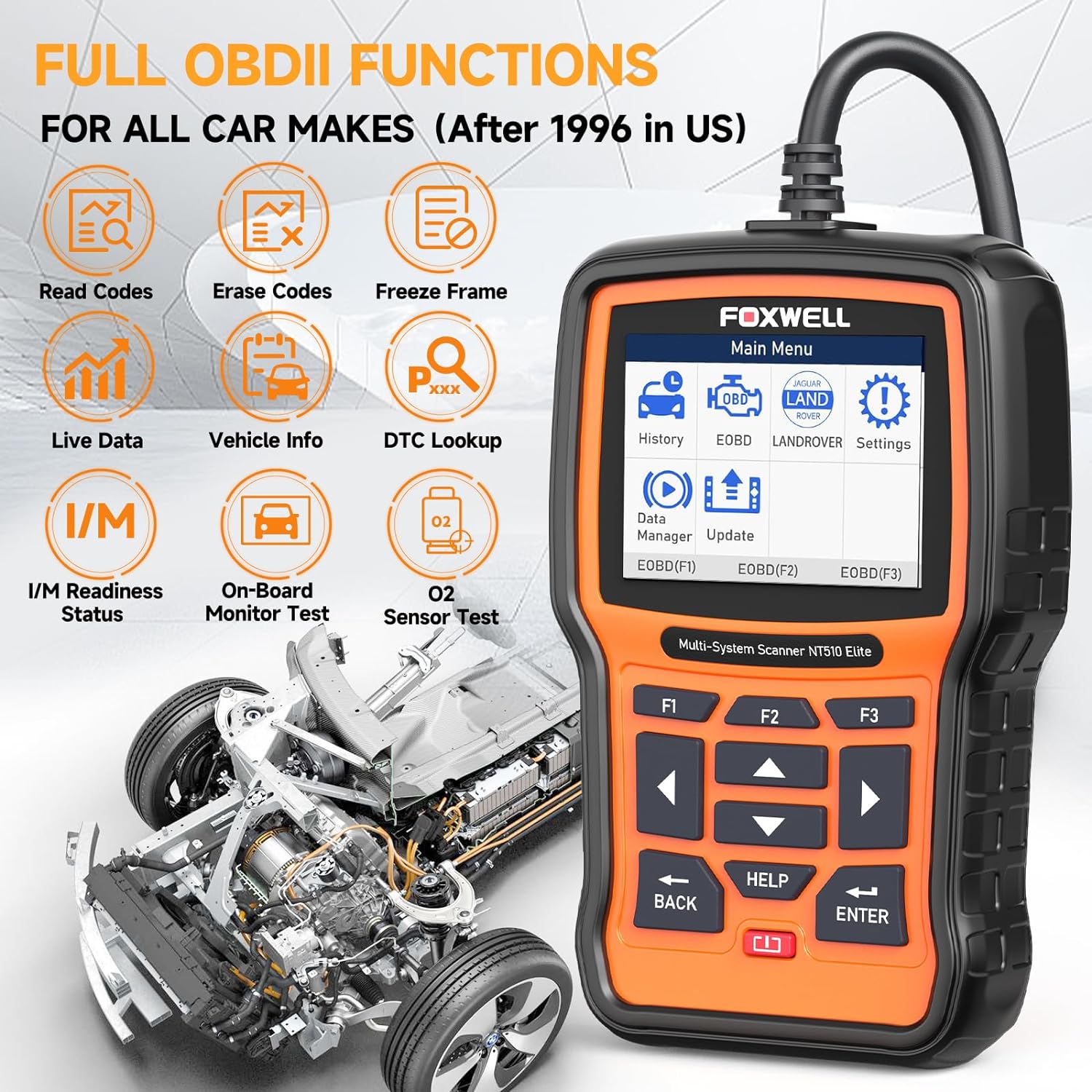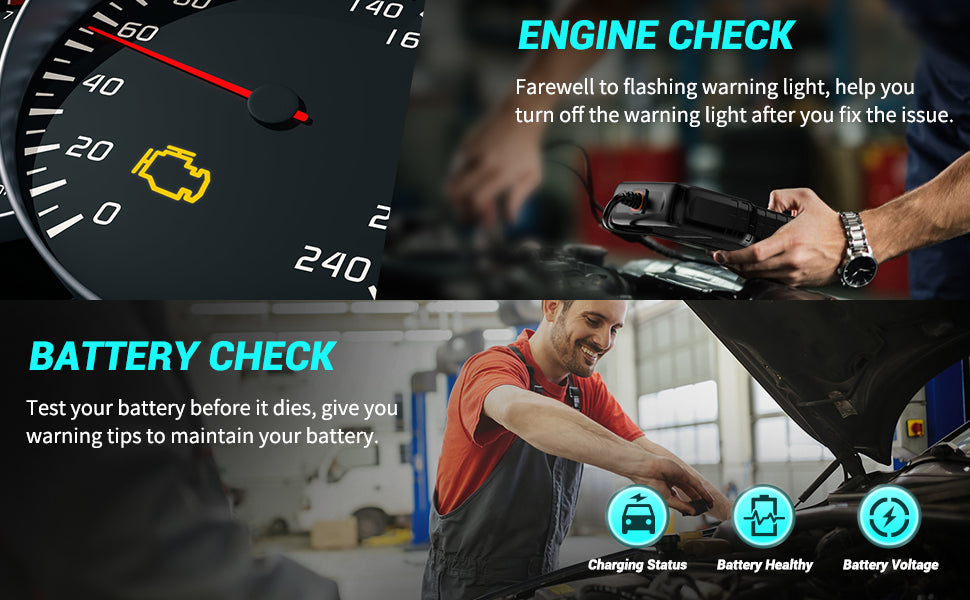OBD2 (On-Board Diagnostics II) scanner instructions provide essential information for vehicle owners and mechanics, allowing them to effectively use these diagnostic tools. The information conveyed by these instructions is critical for ensuring proper use and maximizing the utility of the scanner. Get it here Foxwell NT650 Elite illustrates aspects of the message conveyed.

Setting Up a OBD2 Scanner
Installing your Foxwell NT650 Elite OBD2 scanner is straightforward and allows you to begin diagnosing vehicle issues accurately and precisely. Before connecting the scanner, turn off your vehicle and locate its OBD2 diagnostic port—usually under the dashboard near the steering wheel. Depending on your car model, this 16-pin connector may have its cover covered.
Once you have identified an available port, securely connect the Foxwell NT650 Elite's connector. Check that all connections are tight to avoid any transmission errors. With your scanner securely installed and running smoothly, switch on the ignition without starting up the engine; this will activate both its ECU (Engine Control Unit) and scanner simultaneously.
On the Foxwell NT650 Elite, navigate to its main menu and select your vehicle by its make, model, and year for more accurate diagnostics. Depending on the vehicle's requirements, additional vehicle details, like engine type, may need to be entered. Its user-friendly interface has an organized menu for fast setup; first-time users should consult their user manual, which provides helpful tips to optimize use.
Once all is set up, diagnostics can begin. The NT650 Elite provides automatic scans that quickly identify any trouble codes or potential issues in your vehicle's systems, and special features like oil service reset, EPB service reset, and DPF (Diesel Particulate Filter) regeneration make this tool suitable for both routine maintenance and complex repairs alike.
Foxwell NT650 Elite's OBD2 Code Decoding Solution
When it comes to OBD2 codes, one of the core tasks for vehicle management is deciphering OBD2 codes - which is essential in diagnosing vehicle faults. OBD2 (diagnostic trouble codes or DTCs) help pinpoint engine and system-specific issues within your vehicle's engine and other systems. They can often be divided into specific groups depending on what issue they indicate:
Powertrain Codes (P Codes): These codes typically pertain to engine and transmission issues.
Chassis Codes (C Codes): Chassis systems include suspension, brakes, and steering; however, these C codes typically involve these systems rather than engine/transmission issues.
Body Codes (B Codes): focus on body systems such as air conditioning, power windows, and airbags. Its Network Communication Codes (U Codes) Target issues within the vehicle's communication network, like wiring issues or failing data exchange.
Foxwell NT650 Elite scanner displays these codes along with detailed definitions on its screen; for instance, if your vehicle shows a P0301 code, it indicates a misfire in cylinder 1. However, in addition to providing just this information, it provides troubleshooting tips and data readings related to that specific fault - making this feature invaluable to DIY mechanics and professionals as it quickly helps identify where and what the issue might be without extended manual diagnostics.
Lastly, the NT650 Elite allows users to view live and record live data streams - this can be invaluable when identifying intermittent issues that don't trigger permanent DTC codes. Understanding and using OBD2 codes properly enables vehicle owners to make more informed repairs while prolonging vehicle longevity at lower costs and longer service intervals.
These expanded sections offer an in-depth exploration of how the Foxwell NT650 Elite can be utilized, showing its versatility for personal and professional applications.
Troubleshooting Common OBD2 Scanner Errors
Working with sophisticated tools such as the Foxwell NT650 Elite can present unique challenges when operating errors arise during use. Knowing how to address common OBD2 scanner issues will greatly enhance your diagnostic experience.
Connection Issues: One of the most prevalent user issues is connection failure. This could be caused by poor connectivity between their scanner and the vehicle's OBD2 port, so make sure that its connector is securely plugged into it, inspect both for dirt or debris build-up or any damage, then unplug/replug the connector - sometimes this solves any potential issues!
Software Glitches: Another common software-related issue involves software glitches. The Foxwell NT650 Elite's firmware is regularly updated to enhance functionality and expand vehicle coverage; make sure your scanner's software is up-to-date by connecting it to a PC and visiting Foxwell's official website for any available updates - this may help prevent software issues like freezing or slow responses in future updates.
Error Codes: If your scanner begins displaying error codes or fails to read your vehicle's ECU, this could be due to compatibility issues or a malfunctioning ECU. Check Foxwell's supported vehicle list, and if these fail, then consult with a mechanic, as the issue could lie with its ECU not functioning as intended.
Power Issues: Once connected to an OBD2 port with the ignition on, the scanner should power on. If it does not, ensure your vehicle's battery is adequately charged, and check any fuses associated with OBD2 systems, as these could block power to the scanner and prevent its function.
By addressing these common issues, users can ensure the Foxwell NT650 Elite remains in optimal working condition for accurate diagnostics and vehicle monitoring.
Understanding OBD2 Scanner Instructions
Following detailed OBD2 scanner instructions is key to optimizing the diagnostic capabilities of tools like the Foxwell NT650 Elite scanner and reaping all its advantages. Here are a few benefits of following detailed scanner instructions as well as owning such a versatile OBD2 device:
Empowered Vehicle Maintenance: With its comprehensive instructions, the Foxwell NT650 Elite empowers vehicle owners to conduct accurate diagnostics themselves. This reduces reliance on professional services for routine checks and minor issues, provides immediate attention and maintenance, and prolongs the vehicle's lifespan.
Cost Savings: Regular use of the Foxwell scanner can result in substantial cost savings. By diagnosing and rectifying minor faults early, costly repairs and parts replacements can be avoided altogether. Furthermore, resetting warning lights and performing adaptations saves money that would otherwise be spent on professional diagnostics services.
Enhance Vehicle Performance: Regular diagnostic checks using the Foxwell NT650 Elite can ensure optimal vehicle performance. Early identification of potential issues before they become serious ensures your car runs efficiently and reliably.
Comprehensive Vehicle Coverage: The NT650 Elite provides comprehensive vehicle coverage, offering functions such as oil service reset, EPB service, and DPF regeneration - making this tool invaluable for households with multiple and varied vehicle brands.
Ease of Use and Efficiency: The NT650 Elite's user-friendly design and intuitive interface, combined with clear instructions, make it an easy tool for both amateurs and professionals to use efficiently, resulting in quicker diagnostics and reduced vehicle downtime.
Utilizing the Foxwell NT650 Elite and following its detailed OBD2 scanner instructions provides many benefits to any vehicle owner, from increasing vehicle longevity and decreasing maintenance costs to creating a more reliable driving experience and enjoyable journeys.
FAQs:
What can an OBD2 scanner be used for?
By accessing the vehicle's onboard diagnostics system, an OBD2 scanner can help diagnose vehicle performance and engine issues.
Can I use a Foxwell scanner on any vehicle?
Foxwell scanners are compatible with most modern vehicles supporting OBD2 protocols - typically those manufactured after 1996.
How often should I scan my vehicle with an OBD2 scanner?
For optimal performance, we advise scanning at least annually or whenever there are signs of vehicle distress, such as before embarking on an extended trip.




Leave a comment
This site is protected by hCaptcha and the hCaptcha Privacy Policy and Terms of Service apply.